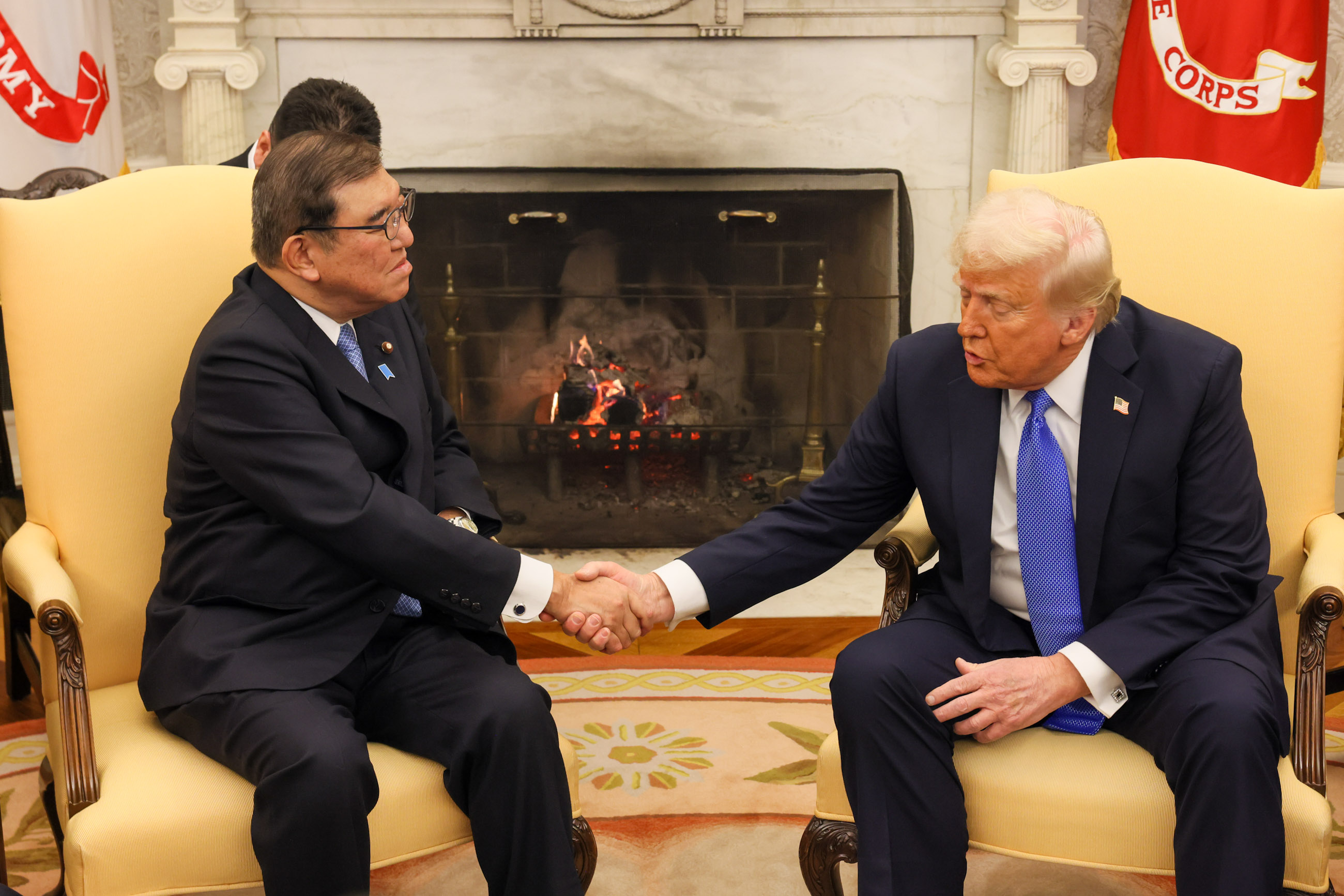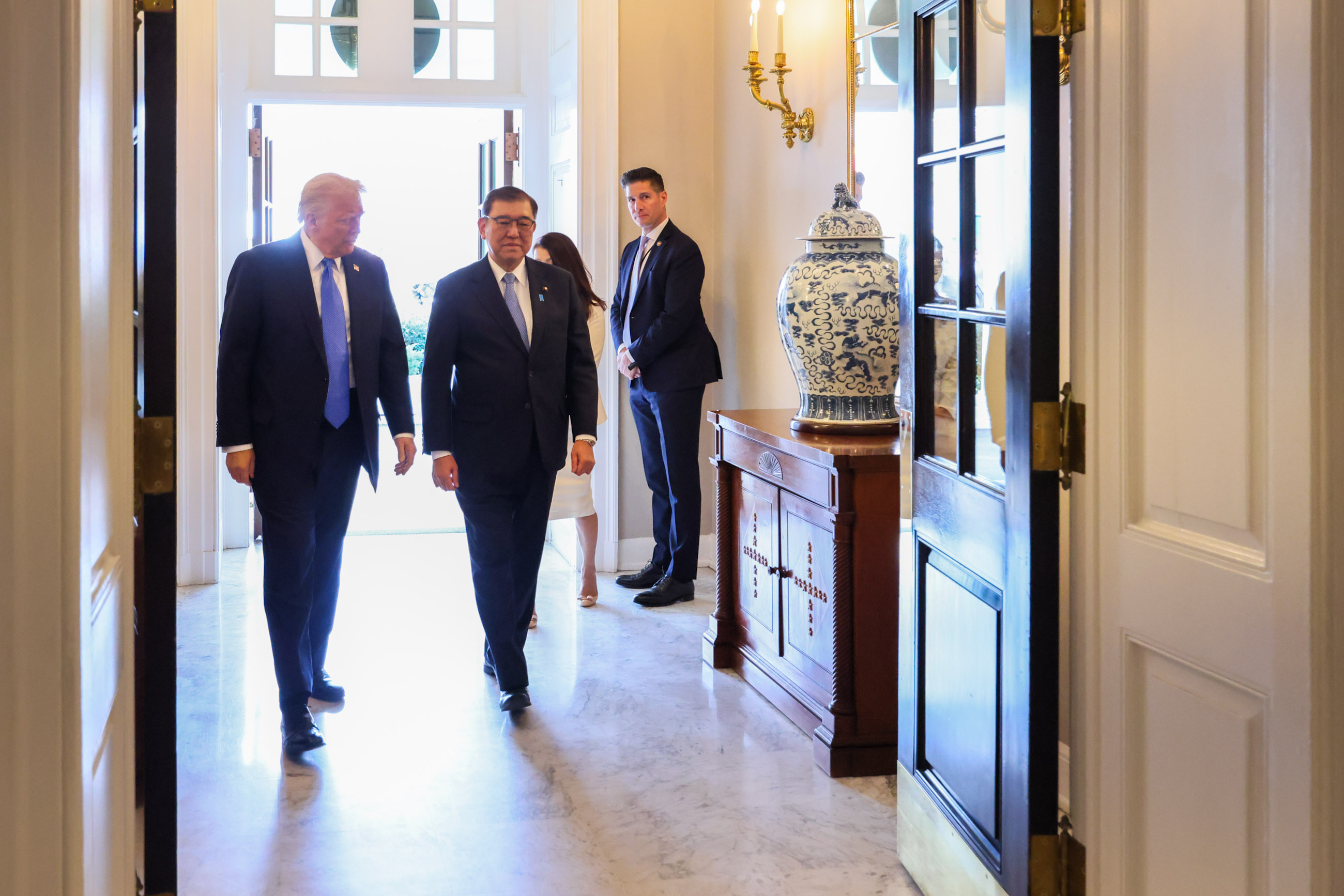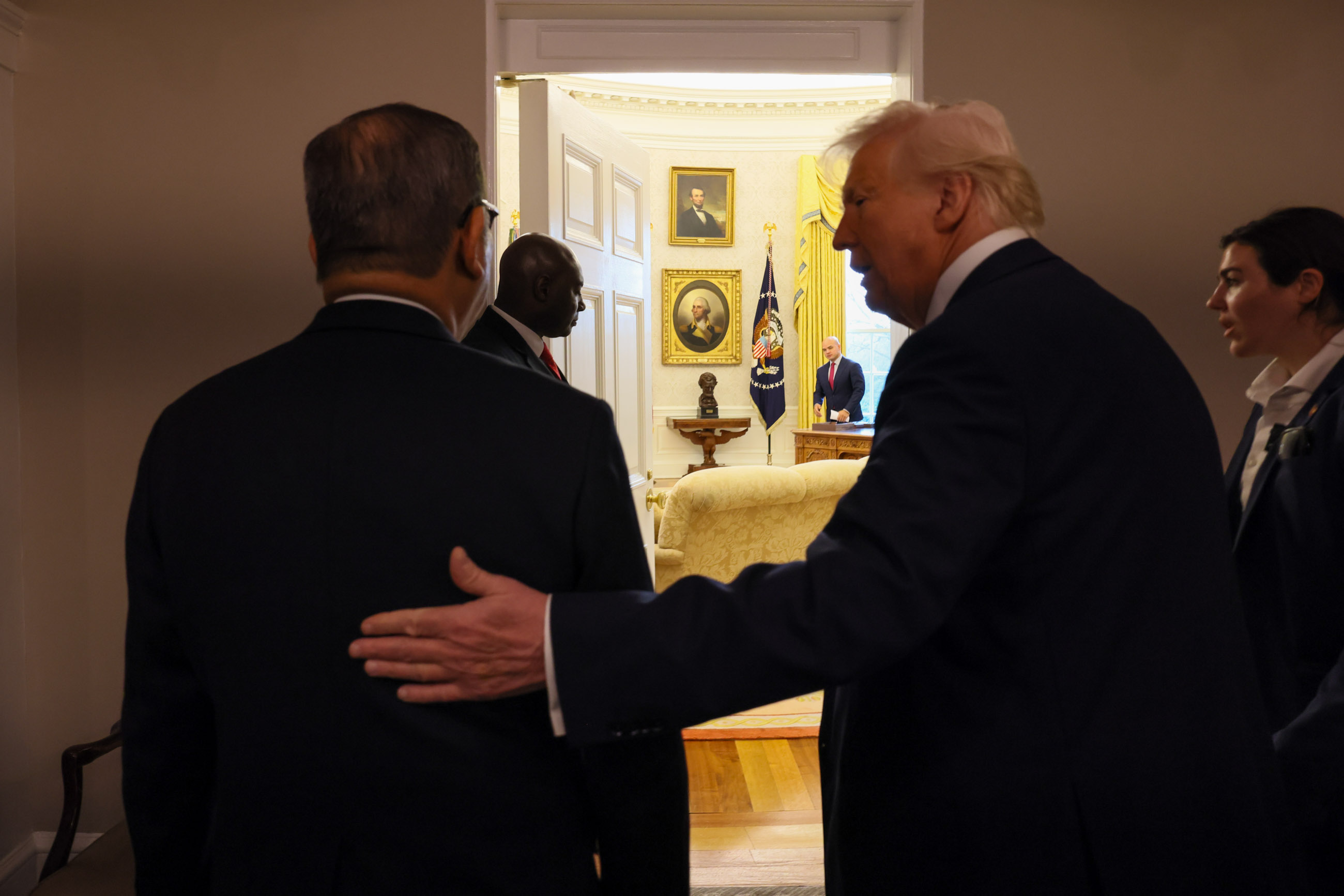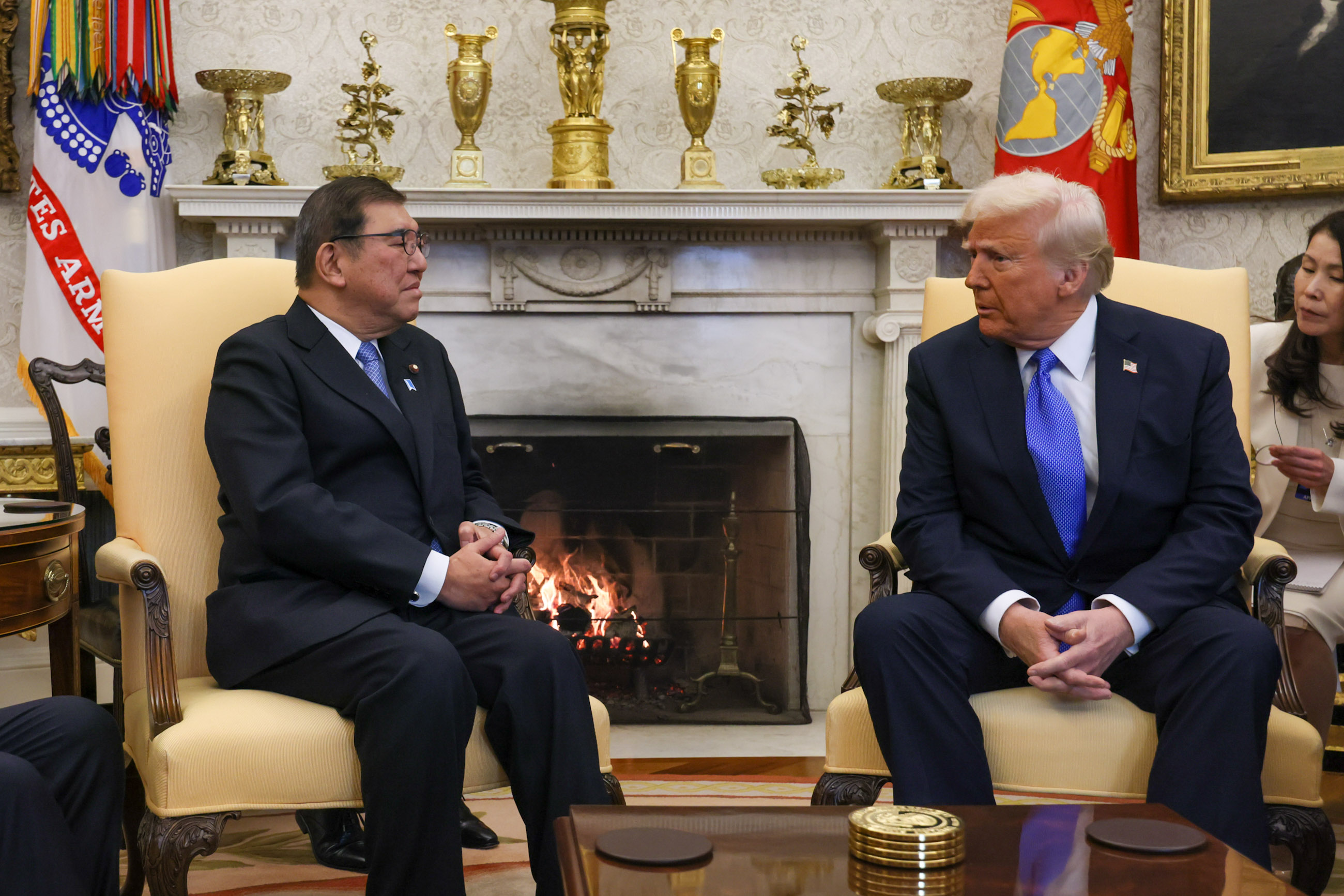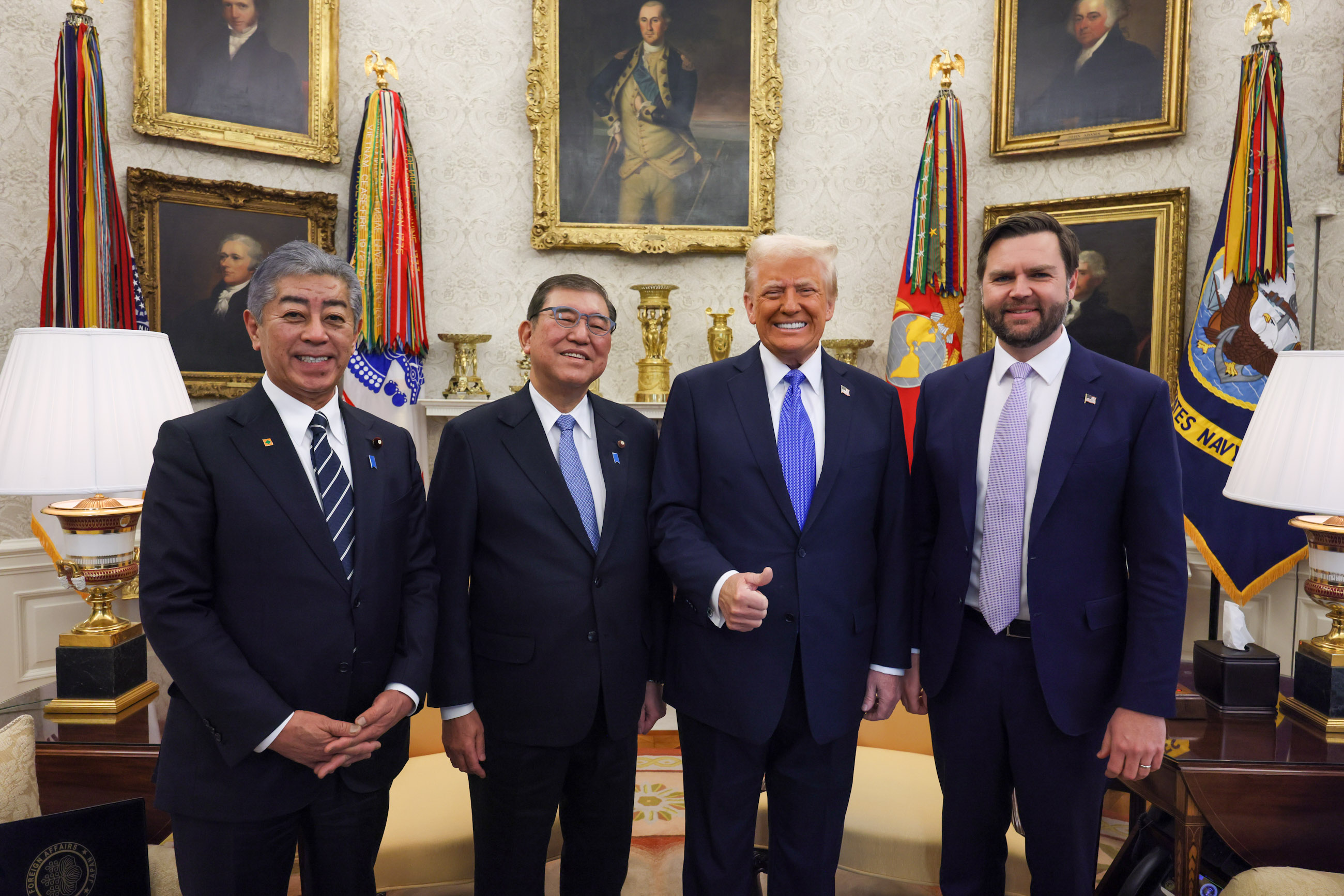Japan-U.S. Summit Meeting (Summary)
February 7, 2025
[Provisional translation]
On Feburary 7, commencing at 11:55 a.m. (local time. 1:55 a.m. on February 8, Japan time.) for approximately 110 minutes, Mr. ISHIBA Shigeru, Prime Minister of Japan, during his visit to Washington D.C., held the first in person meeting with the Honorable Donald J. Trump, President of the United States of America. The overview of the meeting is as follows (the small group meeting commenced at 11:55 a.m. (local time. 1:55 a.m. on February 8 , Japan time) and lasted approximately 30 minutes; the extended meeting (working lunch) commenced at 0:25 p.m. (local time. 2:25 a.m. on February 8, Japan time and lasted approximately 80 minutes)
1. At the outset, Prime Minister Ishiba stated that the U.S. is the most important country for Japan’s diplomacy and security. He also stated that he would like to work together with President Trump to continue elevating the Japan-U.S. Alliance to new heights to realize a free and open Indo-Pacific.
2. The two leaders shared the views on the severe and complex security environment and concurred to work closely to realize a free and open Indo-Pacific and to elevate the Japan-U.S. Alliance to new heights.
3. The two leaders concurred to strengthen the deterrence and response capabilities of the Japan-U.S. Alliance and to work closely to address strategic challenges in the region that both countries are facing. Prime Minister Ishiba reiterated Japan’s unwavering commitment to fundamentally reinforcing its defense capabilities and President Trump welcomed such commitment.
4. President Trump underscored the unwavering commitment by the U.S. to the defense of Japan, using its full range of capabilities, including nuclear. The two leaders once again reaffirmed that Article V of the Japan U.S. Treaty of Mutual Cooperation and Security applies to the Senkaku Islands. The two leaders confirmed their commitment to the steady implementation of the realignment of U.S. Forces in Japan in accordance with the Okinawa Consolidation Plan, including the construction of the Futenma Replacement Facility at Henoko and the total return of Marine Corps Air Station (MCAS) Futenma.
5. The two leaders affirmed that Japan and the U.S. are close partners in the economic field as well, with Japan being the world's largest investor in the U.S. for five consecutive years. Prime Minister Ishiba conveyed his willingness to cooperate together to elevate Japan’s investment in the U.S. to an unprecedented amount of one trillion dollars, and President Trump strongly welcomed such investments by Japanese companies.
6. The two leaders then concurred to elevate the Japan-U.S. partnership to an even higher level through improving the business environment and increasing bilateral investment and employment, strengthening each other’s industries and leading the world in development in the field of technologies such as AI and leading-edge semiconductors, and strongly promoting efforts to harness the energy of the growing market in the Indo-Pacific region. The two leaders also confirmed that they will cooperate to strengthen energy security between the two countries, including increasing exports of U.S. liquefied natural gas to Japan, in a mutually beneficial manner.
7. The two leaders exchanged views on regional Affairs.
(1) The two leaders shared the view on issues related to China and any unilateral attempts to change the status quo by force or coercion including in the East and South China Seas. The two leaders reiterated the importance of peace and stability across the Taiwan Strait.
(2) The two leaders shared the views on the situation regarding North Korea, and affirmed the need to address its nuclear and missile issues together, as well as their resolute commitment to the complete denuclearization of North Korea. Prime Minister Ishiba asked for continued understanding and cooperation of the U.S. for the immediate resolution of the abductions issue, and gained full support from President Trump.
8. The two leaders concurred on the importance of further developing coordination of like-minded countries, including Japan-U.S.-Republic of Korea (ROK), Japan-Australia-India-U.S. and Japan-U.S.-Philippines.
9. The two leaders concurred to maintain close partnership to further uphold and bolster the Japan-U.S. relations, which have become stronger than ever, and they issued a joint statement.
10. At the end of the meeting, Prime Minister Ishiba invited President Trump to the official visit to Japan at an early timing.
